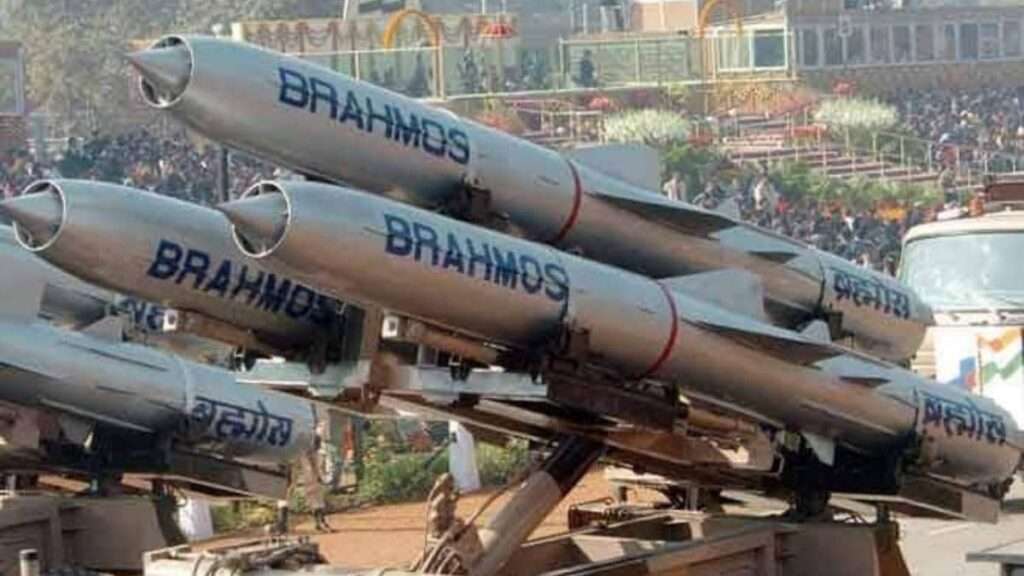When missile vehicles entered the Indian Navy’s Forward Operating Bases at Porbandar and Okha, this was not simply a deployment it was a doctrinal leap. The BrahMos-equipped Next Generation Maritime Mobile Coastal Batteries – Long Range (NGMMCB-LR) are the most powerful coastal defence options ever deployed on Indian territory. They are mobile, precision-guided supersonic missiles and their deployment puts Pakistan’s port of Karachi firmly within strike range.
This upgrade is the culmination of an incredibly long journey, starting in the Cold War with old but symbolic Soviet-era missiles deployed on India’s coast. India’s coastal missile capability has progressed from the bulky Styx missile systems of the 1970s, to today’s slim and fast BrahMos cruise missiles and matured in accordance with geopolitical requirements and technological advances.
The Styx Era: Basis for Building India’s Coastal Strike Capability
India’s coastal missile defence story began during the boiling point of the Cold War, in procuring P-15 Termit (known as Styx) missiles from the Soviet Union. Though basic by today’s standards, the Styx missiles proved explosively effective in the 1971 Indo-Pakistani War. The Indian Navy, through Operation Tridents and Operation Python, originating from missile boats carrying Styx missiles, decimated Karachi’s port and naval infrastructure. It was a historic moment not just for the Indian Navy, but for missile warfare in South Asia. Static Styx missile batteries along India’s coasts became deterrent cover and legacy for years.
The BrahMos Revolution: Speed, Precision, Mobility:
The BrahMos, a pride of India’s desire for speed, accuracy, and control in defence. The BrahMos missile is the world’s fastest supersonic cruise missile resulting from a joint effort by India’s Defence Research and Development Organisation and NPO Mashinostroyenia of Russia. The BrahMos missile flies at speeds of Mach 2.8 to 3.0 and has a range of 290–450 km while updated missiles will expand the range to over 800 km, which would make it near-strategic.
Strategic Deployment: Porbandar and okha:
The establishment of the NGMMCB-LR batteries at Porbandar and Okha is purposeful and strategic, given that both locations are located at the edge of the Arabian Sea and are relatively close to Pakistan. With BrahMos systems positioned at these two locations, India will have the ability to conduct precision strikes deep into hostile waters and territory, as far south as Karachi, Pakistan’s economic and naval nerve center.
The deployment also occurs in a wider geopolitical context. Since the 2020 Galwan clash with China, India has been updating its coastal security architecture and maritime deterrence posture, as tensions with Pakistan have also increased. The BrahMos deployments will send a signal not only to Pakistan but to any regional adversary contemplating naval adventurism. Moreover, the Indian Navy has purchased the systems in a March 2023 contract at a price of ₹17,700 crores (around USD 2.1 billion), with the systems categorized under ‘Buy (Indian)’ from BrahMos Aerospace Private Ltd in accordance with India’s vision of [defence]‘Atmanirbhar Bharat’ campaign aimed at increasing indigenous defence capability and reducing defence import dependency. India has also increased joint naval exercises, strengthened base development, and increased coastal vigilance from Gujarat to the Andaman and Nicobar Islands.
Brahmos – A Doctrinal Shift:
BrahMos coastal batteries are more than just a tactical asset; they represent a strategic doctrinal pivot. India is transitioning from a “sea denial” posture, where the intent is to deny access by the enemy, to “sea control” where India will now command the seas and impose its will within its maritime domain. This transition coincides with modern maritime doctrines undertaken by major powers, including the United States and China that view coastal defence as projectable not as passive.
“The systems are not strictly defence. They will shape behaviour. The mere presence of a system like this will totally change the way adversaries think about planning and movement,” noted Vice Admiral Satish Ghormade former Vice Chief of Naval Staff.
India is not resting on its laurels with BrahMos. The DRDO is working on BrahMos-II, a hypersonic derivative, that can achieve speeds greater than Mach 7 and layering these systems into networked warfare systems that include real-time data fusion, AI-assisted targeting and multi-layered air defence. Porbandar and Okha, long forgotten coastal regions, are rapidly turning into nerve centres of India’s medium and long-range maritime strategic capability. With BrahMos on wheels, India’s shoreline has been transformed from a line of vignette defense into a ready strike front, quietly recalibrating regional security calculations.
The change from Styx to BrahMos represents a larger pattern for India’s defence that of self-reliance, technological primacy, and strategic deterrence. The BrahMos coastal batteries deployed at Porbandar and Okha is not just a tactical upgrade, representative of a shift in doctrine to an effective long-range, precision-strike offensive capability at India’s western maritime periphery that extends influence deep into the Arabian Sea while subtly changing regional perceptions of credible threat. In a maritime domain defined by grey-zone threats, sea denial approaches, and contested chokepoints, this has furthered India’s maritime freedom of movement to dictate terms, deter hostile aggression, and apply power – all without crossing a border. The conduct war in the future in the Indo-Pacific represents an evolving paradigm shift towards credibly deterrence as much as it does lethality. With BrahMos now silently recommending the western seaboard of India and beyond, India holds both the high ground- and the depth of reach at sea.

